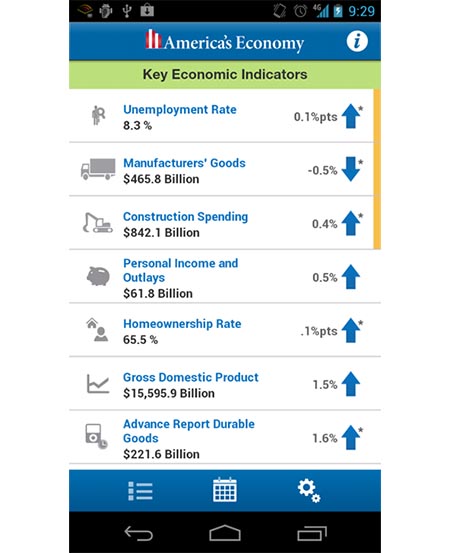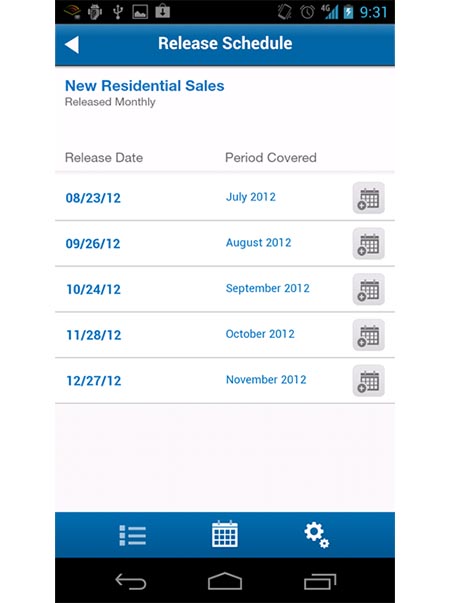Robert Rich, Kara Masciangelo, and Mary Tao
We encounter important economic data every single day. From reports on housing starts to unemployment to gross domestic product to construction spending, economic data are constantly shaping the news and our world. Now, the Census Bureau has made it even easier to keep our fingers on the pulse of these important economic indicators, with the launch of its first mobile application, “America’s Economy.”
To meet the public’s evolving information needs, the Census Bureau’s Web Transformation Project has made our tablets and smartphones smarter with “America’s Economy.” This new tool provides real-time access to frequently quoted data from the Commerce Department’s Census Bureau and Bureau of Economic Analysis (BEA) and the Labor Department’s Bureau of Labor Statistics (BLS).
The data series represented include the Commerce Department’s Advance Monthly Retail Sales, New Residential Construction, New Residential Sales, Construction Spending, International Trade, Advance Report on Durable Goods, Business Inventories, Manufacturers’ Goods, Monthly Wholesale Trade, Homeownership Rate, Quarterly Services Survey, and Quarterly Financial Reports on Retail Trade and Manufacturing. Also available are Gross Domestic Product and Personal Income and Outlays data from the BEA as well as Unemployment Rate data from the BLS.
Users of the “America’s Economy” app will be able to set up customized notifications when specified indicators are released and can add the release dates to their calendars.
Tap into “America’s Economy” on your Android or tablet today.
“America’s Economy” will be available for Apple devices later this summer. For more information, visit the Census Bureau.
- Here are some of the data now available at your fingertips:
- Release dates for the series can be added to your personal calendar.
Disclaimer
The views expressed in this post are those of the authors and do not necessarily reflect the position of the Federal Reserve Bank of New York or the Federal Reserve System. Any errors or omissions are the responsibility of the authors.

Robert Rich is an assistant vice president in the Macroeconomic and Monetary Studies Function of the Federal Reserve Bank of New York.
Kara Masciangelo is a research librarian in the Research Services Function of the Federal Reserve Bank of New York.
Mary Tao is a research librarian in the Research Services Function of the Federal Reserve Bank of New York.












 RSS Feed
RSS Feed Follow Liberty Street Economics
Follow Liberty Street Economics